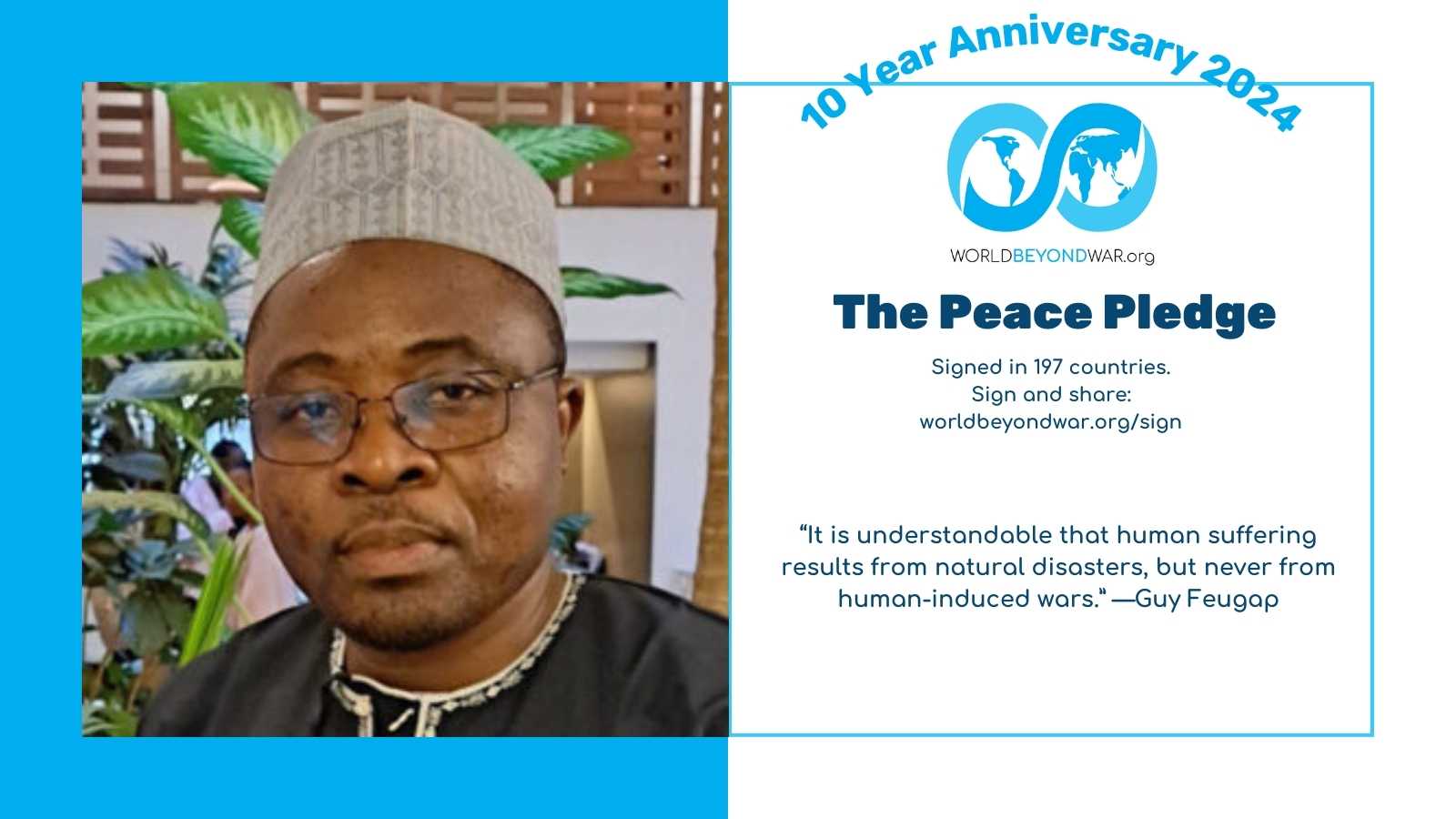
You can sign the peace pledge here.
At World BEYOND War we
often flood elected officials with emails or phone calls — or bodies in
their offices — with very urgent and specific demands to stop killing
particular populations. At the same time, at the height of crises and
otherwise, we find it valuable to press in a different direction. We
don’t want one nation saved and some other nation bombed. We don’t want
the weapons of mass murder sent to a different military that won’t use
them right now on exactly the same people we’re concerned about today.
We don’t want the new base built in someone else’s fields instead of
those we are defending in this moment. We want the entire enterprise of
war left behind. We want all that energy and money invested in urgent
human and environmental needs rather than mass slaughter, destruction,
and the risking of an apocalyptic World War III.
Of course, in some parts of the world, many people don’t agree with
that. We have created countless reading, listening, and viewing
materials and courses to help people reach that understanding. But for
those who do agree with abolishing war, the Declaration of Peace or Peace Pledge
is how we demonstrate our numbers, our reach, our determination, and
our vision to institutions that have a hard time thinking past next
week.
You can sign the peace pledge here.
We’re building on a rich history. On October 16, 1934, the Peace
Pledge Union, the oldest secular pacifist organization in Great Britain,
was begun. Its creation was
sparked by a letter in the Manchester Guardian written by a
well-known pacifist named Dick Sheppard. The letter invited all men of
so-called fighting age to send Sheppard a postcard stating their
commitment to “renounce war and never again to support another.” Within
two days, 2,500 men responded, and, over the next few months, a new
anti-war organization with 100,000 members took shape. It became known
as “The Peace Pledge Union,” because all of its members took the
following pledge: “War is a crime against humanity. I renounce war, and
am therefore determined not to support any kind of war. I am also
determined to work for the removal of all causes of war.”
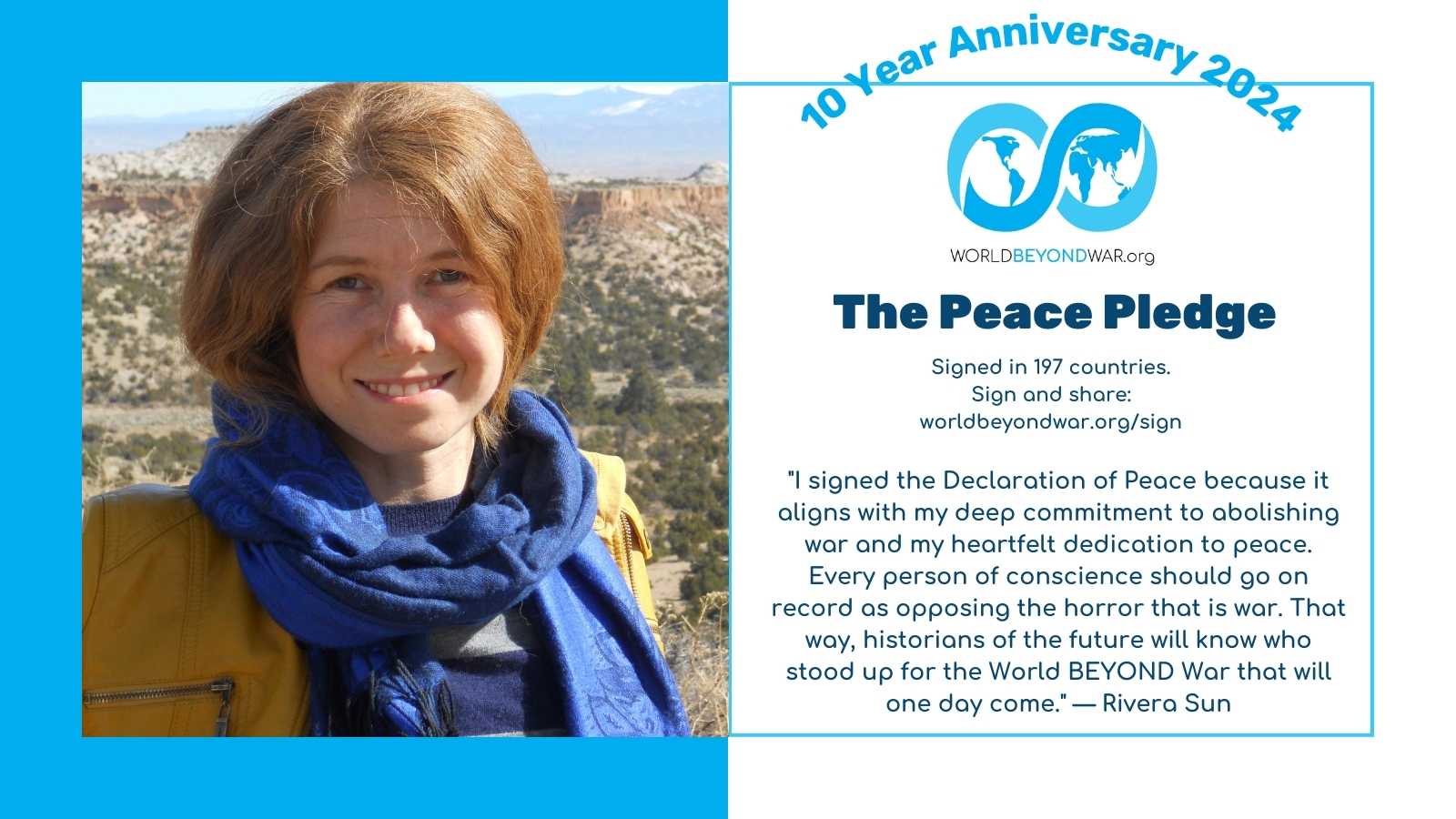
On April 12, 1935, some 175,000 college students across the United
States engaged in classroom strikes and peaceful demonstrations in which
they pledged never to participate in an armed conflict. Student anti-war
mobilizations in the United States grew from 25,000 in 1934 to 500,000
in 1936, each held in April to mark the month the United States had
entered World War I. These young people pledged to oppose all war . They
advanced our understanding of peace, supported unprecedented
accountability for war profiteers, and seeded the nonviolent movements
that would grow from the war-resister prisons of World War II into the
Civil Rights and Peace movements of the 1950s and 60s.
Of course, war has never stopped. And the single most mythologized war of Western culture was waged in the 1940s (see this video). But opposition to war has steadily progressed.
Ten years ago, we created World BEYOND War, and we created a new Declaration of Peace. It reads:
“I understand that wars and militarism make
us less safe rather than protect us, that they kill, injure and
traumatize adults, children and infants, severely damage the natural
environment, erode civil liberties, and drain our economies, siphoning
resources from life-affirming activities. I commit to engage in and
support nonviolent efforts to end all war and preparations for war and
to create a sustainable and just peace.”
What does that mean exactly?
-
Wars and militarism: By wars, we mean the
organized, armed, mass use of deadly violence; and by militarism we mean
preparations for war, including the building of weapons and militaries
and the creation of cultures supportive of war. We reject the myths that usually support war and militarism.
-
Less safe: We are endangered by wars, weapons testing, other impacts of militarism, and the risking of nuclear apocalypse.
-
Kill, injure, and traumatize: War is a leading cause of death and suffering.
-
Damage the environment: War and militarism are major destroyers of climate, land, and water.
-
Erode civil liberties: War is the central justification for government secrecy and the erosion of rights.
-
Drain economies: War impoverishes us.
-
Siphoning resources: War wastes $2 trillion a year that could do a world of good. This is the primary way in which war kills.
-
Nonviolent efforts: These include everything from educational events to art to lobbying to divestment to protesting to standing in front of trucks full of weapons.
-
Sustainable and just peace: Nonviolent activism not
only succeeds more than war at the things war is supposedly for: ending
occupations and invasions and tyranny. It also is more likely to result
in a long-lasting peace, a peace that is stable because not accompanied
by injustice, bitterness, and thirst for revenge, a peace based on respect for the rights of all.
___
You can sign the peace pledge here.

The Declaration of Peace, or Peace Pledge, has been signed by over 900 organizations and by individuals (many well-known) in 197 nations, since we began it in 2014. It can be signed by individuals and organizations online or on paper.
The pledge can be delivered as a petition to any relevant government or institution by modifying and using this document: Word or PDF.
We can create custom presentations of it, highlighting how many signers it has in a particular part of the world.
We believe it has the potential to do vastly more, if every concerned
person sets aside their learned helplessness, corporate-created
powerlessness, and self-indulgent despair (we all have some of it), and
invests much less time than it has taken to read this far in this
article to sign the pledge.
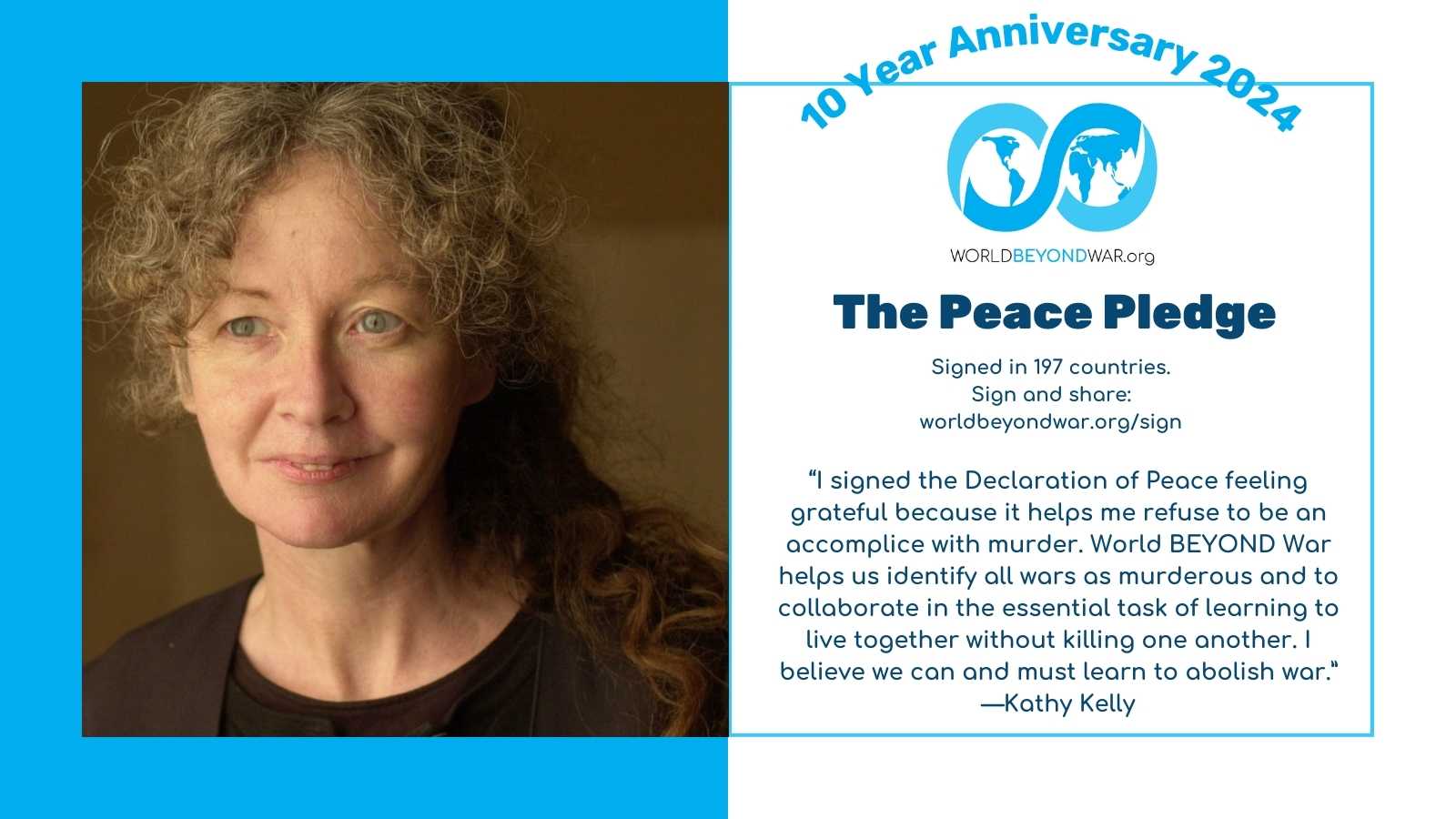
One way the pledge helps us build a movement to end all wars is through numbers.
Another is through alliances with organizations across the full spectrum of human activities.
Organizations can sign the pledge here.
Opposition to war has been bizarrely omitted from most cross-issue
coalitions and movements. Reinstalling peace as a part of progressive
values could unlock vast potential for many movements that can be
stronger together.

Another way in which the Declaration builds a war abolition movement is through engagement with individuals.
After you sign the pledge online, you land on a page of next steps, which includes a link to a short survey letting us know what you do and do not want to be involved in to advance the cause of peace.
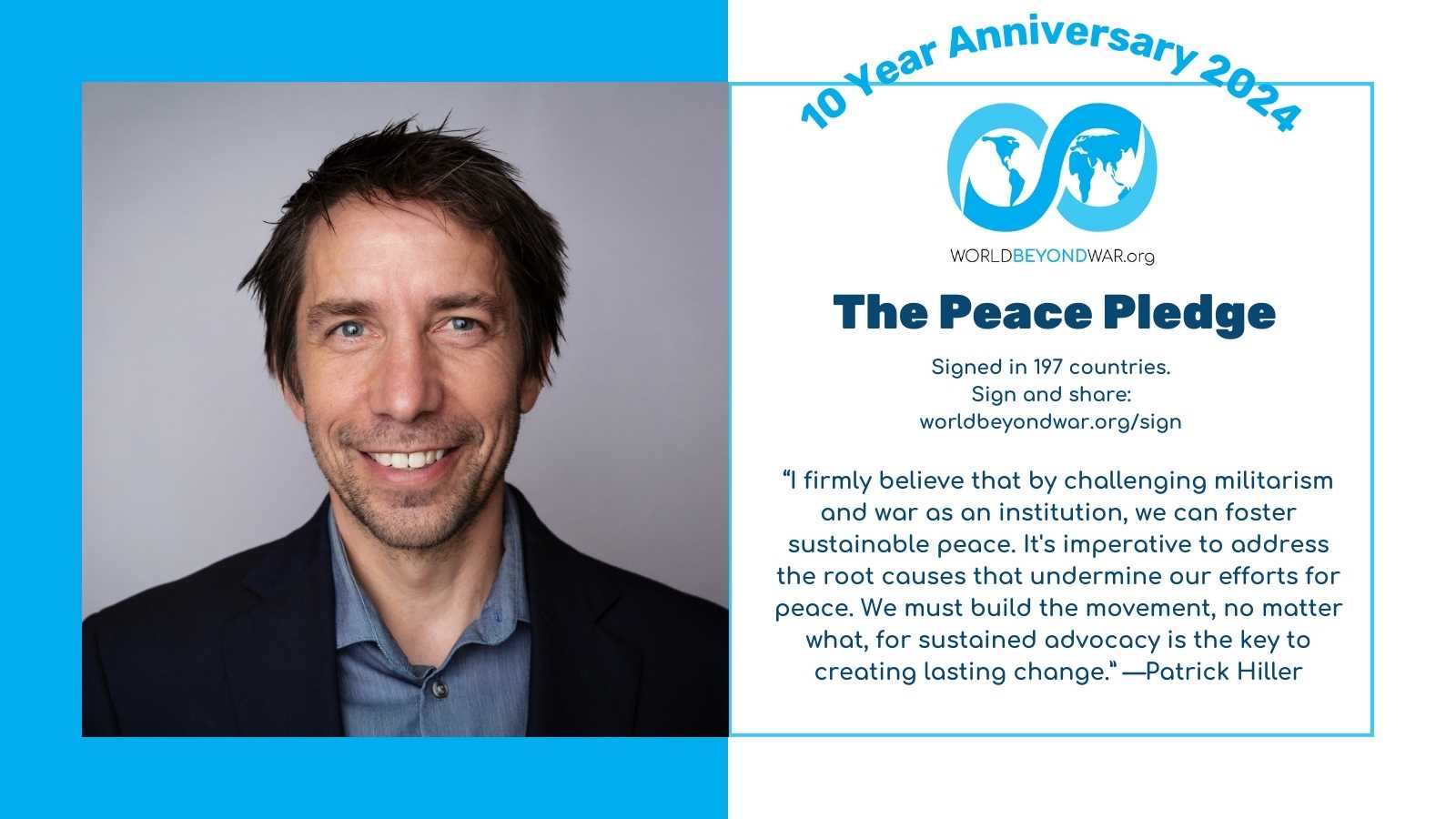
There’s also an online kit for sharing the pledge.
It can be shared in many languages: English. 日本語. Deutsch. Español. Italiano. 中文. Français. Norsk. Svenska. Pусский. Polskie. বাংলা।. हिंदी।. 한국어. Português. فارسی. العربية. Українська. Català.
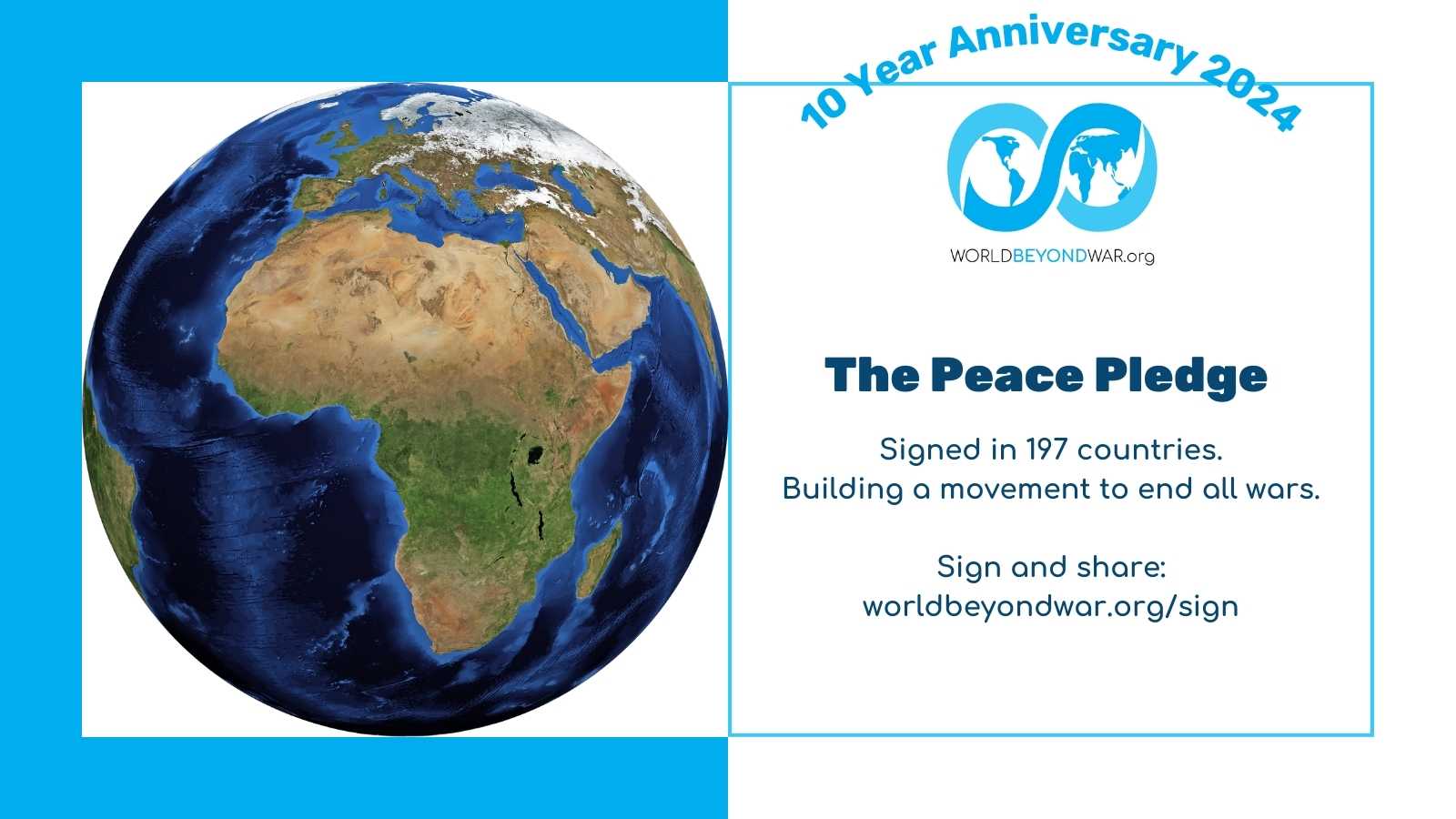
Don’t take our word for any of this. Listen to the good people in this video.
##